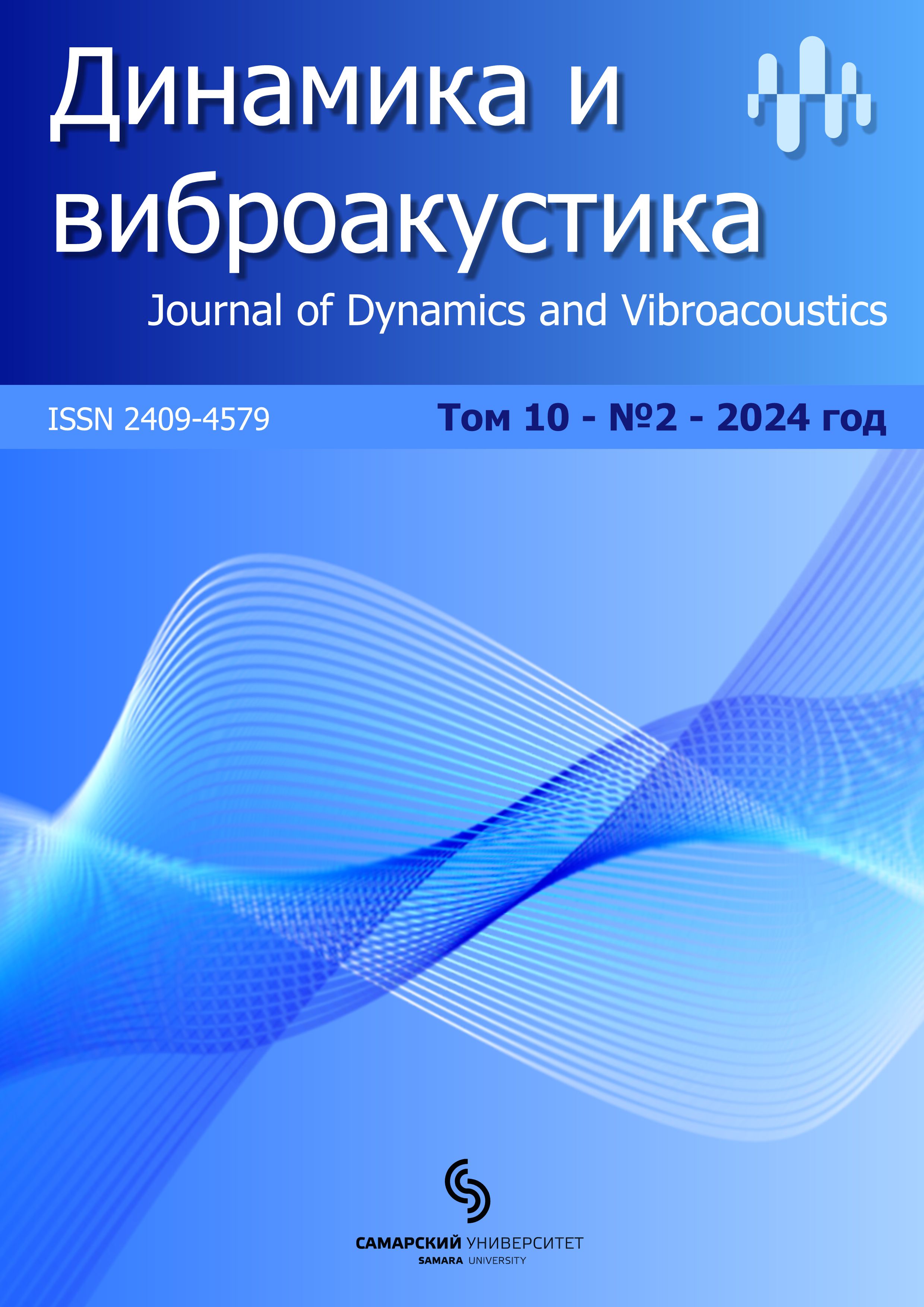Leg prosthesises with active damping
- Authors: Ilyukhin V.N.1, Ermilov M.A.1, Safin A.I.1, Vidyaskina A.N.1
-
Affiliations:
- Samara National Research University
- Issue: Vol 10, No 2 (2024): 7.10.2024
- Pages: 84-97
- Section: Articles
- Published: 07.10.2024
- URL: https://dynvibro.ru/dynvibro/article/view/27864
- DOI: https://doi.org/10.18287/2409-4579-2024-10-2-84-97
- ID: 27864
Cite item
Full Text
Abstract
The article considers various types of leg prosthesises with active damping based on pneumatic, hydraulic and electric drives. For each type of drive used, its advantages and disadvantages, features of design solutions were described with the aim of further selecting a prototype from existing knee modules of leading manufacturers to develop a domestic solution with characteristics and functionality not inferior to the best world samples. The article considers not only various design and circuit solutions, but also pays attention to the analysis of the applied control algorithms of leg prosthesises, allowing to implement various convenient options, for example, protection against tripping, ascent and descent on uneven surfaces, energy saving and energy recovery systems.
About the authors
Vladimir N. Ilyukhin
Samara National Research University
Email: ilyukhin.vn@ssau.ru
Candidate of Science (Engineering), Associate Professor
Russian Federation, Samara, Russian FederationMikhail A. Ermilov
Samara National Research University
Author for correspondence.
Email: ema@ssau.ru
Candidate of Science (Engineering), Associate Professor
Russian Federation, Samara, Russian FederationArtur I. Safin
Samara National Research University
Email: safin@ssau.ru
Candidate of Science (Engineering), Associate Professor
Russian Federation, Samara, Russian FederationAnna N. Vidyaskina
Samara National Research University
Email: vidyaskina.an@ssau.ru
Postgraduate Student
Russian Federation, Samara, Russian FederationReferences
- Zhigach, A (2020). "Arms are bigger than legs: what are modern prostheses and who makes them in Russia and around the world", Rusbase (RB.RU) [Electronic], available at: https://rb.ru/longread/modern-prosthesis/ (Accessed 12 June 2023).
- Mordor Intelligence (2024), "Hip Replacement Market Size and Share Analysis - Growth Trends and Fore-casts (2024-2029)", available at: https://www.mordorintelligence.com/ru/industry-reports/hip-replacement-market (Ac-cessed 7 July 2023).
- The official site of "APC ProstheticsGroup" (2023), " Prosthetic Knee Solutions", available at : https://apcprosthetics.com.au/prosthetic-knees/ (Accessed 15 June 2023).
- The official site of "Ossur", "Power Knee™", available at: https://www.ossur.com/en-us/prosthetics/knees/power-knee (Accessed 12 May 2023).
- Goldfarb, M., Varol, A., Sup IV, F. C and Mitchell, J. (2014), Powered leg prosthesis and control methodolo-gies for obtaining near normal gait, USA, Pat. 8652218B2.
- Burt, Sh. (2020), Evaluation of a Lightweight Powered Leg Shirley Ryan ability lab [online], available at: https://www.sralab.org/research/projects/evaluation-lightweight-powered (Accessed 07 July 2023).
- Sup, F.; Varol, H.A.; Mitchell, J.; Withrow, T.; Goldfarb, M. “Design and control of an active electrical knee and ankle prosthesis”, Proceedings of the 2nd Biennial IEEE/RAS-EMBS International Conference on Biomedical Robotics and Biomechatronics, Scottsdale, AZ, USA, 19–22 October 2008, pp. 523-528.
- Sup, F.; Bohara, A.; Goldfarb, M. “Design and Control of a Powered Transfemoral Prosthesis”, Int J Robot Res, 2008, vol. 27 (2), pp. 263-273.
- Herr, H. “User-Adaptive Control of a Magnetorheological Prosthetic Knee” Industrial Robot: An Internation-al Journal, 2003, Vol. 30, №1, pp. 42-55.
- Bellmann, M. “Funktionsprinzipien aktueller Mikroprozessor gesteuerter Prothesenkniegelenke” Orthopädie-Technik, 2009, 60, pp. 297-303.
- Blumentritt, S. “The safety of C-Leg: biomechanical tests”, JPO Journal of Prosthetics and Orthotics, 2009, 21(1), pp. 2-15.
- Dietl, H. “C-Leg-Ein neues System zur Versorgung von Oberschenkelamputationen”, Orthopädie-Technik, 1998, 49,pp. 197–211.
- James, K. B.,(1992), System for controlling artificial knee joint action in above knee prosthesis, German and French, Pat. EP0549855B1.
- Kaufman, K. R., “Do microprocessor-controlled knees work better?”, J Biomech, 2006, vol. 39(1), S70.
- Freedom Innovations. Intelligent Hydraulics: Plié2.0 MPC, Knee, available at: http://www.freedom-innovations.com/deutsch/knees/ kneevideo.html (Accessed 12 August 2023)
- Freedom Innovations. Intelligent Hydraulics: Plié2.0 MPC Knee, available at: http://www.freedom-innovations.com/deutsch/knees/ kneevideo.html (Accessed 12 August 2023)
- Palmer M., Bisbee C. R. III, (2006), Novel computer controlled prosthetic knee device, German and French, Pat. EP 1 909 708 B2.
- Turner R.A., Victorville C.A., (2009), Hydraulic dampers with pressure regulated control valve, US, Pat. US 2009/0140475 A1.
- Liang, W., Chen, W. , Qian, Z. , Song, H. , Cao, Y. , We,i G. , Ren, L. , Wang, K. , Ren, L. (2022), “Mecha-nisms and component design of prosthetic knees: A review from a biomechanical function perspective”, Frontiers in Bioengineering and Biotechnology, doi: 10.3389/fbioe.2022.950110.
- Thiele, J., Westebbe, B., Bellmann, M. , Kraft, M., (2014), “Designs and performance of microprocessor-controlled knee joints”, Biomed Tech (Berl), vol. 59(1), pp. 65-77, doi: 10.1515/bmt-2013-0069
- Tang, P. C. Y., Ravji, K., Key, J. J., Mahler, D. B., Blume, P. A., &Sumpio, B. (2007), “Let Them Walk! Cur-rent Prosthesis Options for Leg and Foot Amputees”, Journal of the American College of Surgeons, vol. 206(3), pp. 548–560.
- Lucas Galey, and Roger V. Gonzalez, (2022), “Design and Initial Evaluation of a Low-Cost Microprocessor-Controlled Above-Knee Prosthesis: A Case Report of 2 Patients”, Prosthesis, vol. 4(1), pp. 60–72.
- Kherr, K. M., Vilkenfeld, E., Blek O., Massachusetts INSTIT'JuT OF Teknolodzhi (2006), Method for carry-ing out adaptive control of prosthesis knee shock absorption in standing phase, method for carrying out adaptive control of prosthesis knee shock absorption moment in walking phase, prosthesis knee adaptable to control shock absorption moment in standing phase of patient having no leg and prosthesis unit, US, Pat. RU 2 271 779 C2.
- Kel'vin, B.D., Ortopedicheskoe predprijatie Otto Boka (1997), Method and apparatus for controlling knee joint of leg prosthesis, RU, Pat. 2 089 138 C1.
- Galey, L., Gonzalez, R. V (2022), “Design and Initial Evaluation of a Low-Cost Microprocessor-Controlled Above-Knee Prosthesis: A Case Report of 2 Patients”, vol. 4, pp. 60–72.
Supplementary files







